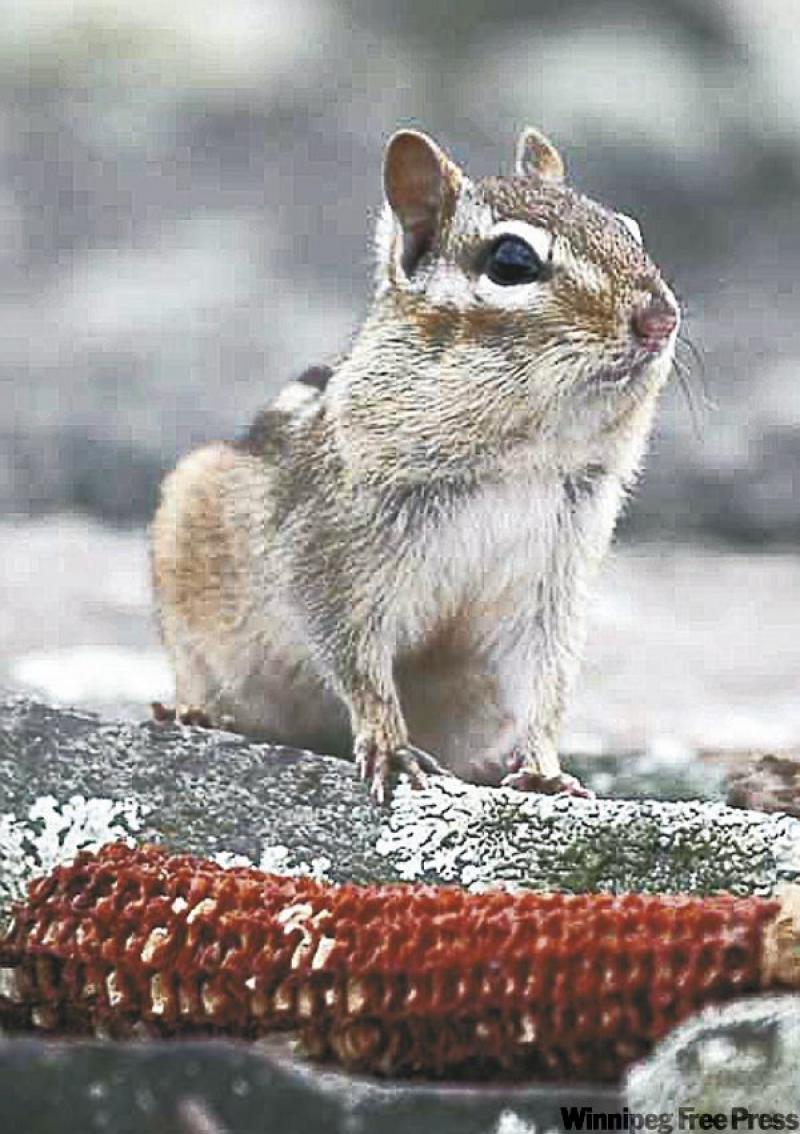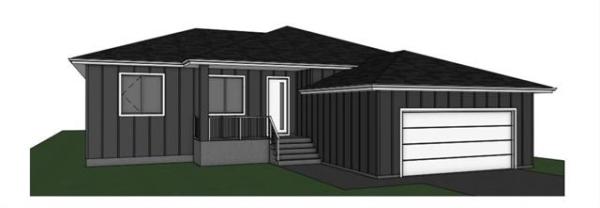
1. If you want to encourage rabbits, squirrels, chipmunks, and other small critters to come to your yard, you must provide food, shelter, and water. A water garden or pond will attract many types of wildlife. A short tray of water or ground-level birdbath is a great place to start.
2. CHIPMUNKS: There are 21 chipmunk species in North America. To lure chipmunks to your garden consider planting a variety of fruit-, nut-, or seed-producing trees and shrubs. Examples are: bBeaked hazel, sweet fern, dogwoods, maples, bitternut hickory, white elm, buffalo berry, blueberries, cherries, raspberries and American basswood. Provide chipmunks with nesting sites by adding rock or brush piles, or old logs. Unlike squirrels, chipmunks pose few problems at bird feeders.
3. BUTTERFLIES: A ceramic or glass pie plate, plastic or terra cotta plant saucer, or a dish with a sloping rim can all be used to make butterfly feeders. Suspend the plate with flowerpot hangers or fashion a macram © holder from household twine. Wind the holder with silk or plastic flowers to decorate the butterfly feeder and make it visually appealing to butterflies. Hang the feeder from the bough of a shady tree, in a spot where you can easily view butterflies. Place the feeder a little higher than your highest flowers. Add slices of over-ripe fruit. You can sprinkle a little fruit juice or water over the fruit slices if they dry out (it's the mushy, rotting, very over-ripe fruit that butterflies like best). Replace the fruit if it dries out or becomes mouldy.
4. BIRDS: If you do not want to purchase birdfeed and hang a feeder, you can attract birds of various types by planting different plants. Sunflowers will attract many birds, as will coneflower and thistle plants.
5. HUMMINGBIRDS: Using red dye in the hummingbird feeder is not necessary. Red food dye has been suspected of promoting tumour development in hummingbirds. The jury is still out on the subject, but until red food dye has been proved safe for hummingbirds, it is a good idea to stay clear of it. If your feeder is not red, you can place red stickers on it to catch hummingbird's attention. Hummingbird food recipe: Combine one part of sugar and four parts of boiled water. Cool and add to feeder. Replace food every three to five days.
6. ORIOLES: Attract orioles with nectar, nuts, suet, and fruits such as oranges, cherries, apples, pears or bananas and even grape jelly. Platform or tray feeders often work best. Be sure to hang feeders from a tree branch or place on deck rail instead of on the ground.
7. BIRD PANCAKE RECIPE: Beat two small eggs, stir in one cup milk, one cup zucchini grated, one cup carrot grated and three and a half tbsp. oil. In a separate bowl combine: one cup whole wheat flour, three tsp. baking powder, two tbsp. sugar and one and a half cups cornmeal. Stir together all ingredients until slightly lumpy. Pour into frying pan and brown both sides. Cool and serve. Freeze leftovers.
8. BLUEBIRDS: What a treat to see bluebirds in the yard! They prefer to nest in boxes on a tree stump or wooden fence post between three and five feet high. Bluebirds also nest in abandoned woodpecker nest holes. The most important measurement is the hole diameter. An inch and a half is small enough to deter starlings. Starlings and house sparrows have been known to kill baby bluebirds as well as adults sitting on the nest. Bluebirds tend to have problems with other animals too. The easiest way to discourage predatory cats, snakes, raccoons, and chipmunks is to mount the house on a metal pole, or use a metal predator guard on a wood post.
9. DRAGONFLIES: Creating a new pond in your garden is a great way to attract dragonflies with fast results. Make sure that less than 30 per cent of your pond is shade-covered. Dragonfly larvae are cold-blooded, so they need sunlight. Without enough heat, they are inactive and stop eating or escaping from predators. Adult dragonflies are solar-powered and need to reach a certain temperature before they can fly. Tip: If you are attracting dragonflies to control mosquitoes, be sure that you do not also employ bug zappers. They will zap your dragonflies.
10. DEER: People interested in feeding deer in their yards should select a high-protein food supplement. Corn only has six per cent protein versus what deer actually need, a 16- to 20-per-cent protein food. Corn only offers the deer a low-protein, high-carbohydrate diet (basically deer candy). Feeding the low-protein corn makes the deer prone to munching shrubs in the yard. Note: Although beautiful to look at, deer can do a lot of damage to flower and vegetable gardens. Be sure you can deal with that before enticing them into the yard. Of course, if deer do not live in your area due to lack of habitat like woods, you will not get any in your yard. People who live near major roadways should not entice them, as the danger of accidents and death will increase.
11. RABBIT FOOD: Puree and mix one small carrot, half a banana and one tbsp. honey. Add one-quarter cup of ground-up (use a coffee grinder) rabbit pellets and one-quarter cup ground-up oats. Mix and knead. Cover with parchment paper. Press out "dough" in one-quarter-inch-thick layer. Use a tumbler to cut into circles. Place cut shapes onto a parchment-paper-covered cookie sheet. Bake at 325 degrees for about 20 minutes (check to make sure they are not browning). Turn off the heat and let the cookies sit in the warm oven for an hour.
12. HAMSTER FOOD: Combine the following in a small dish: three pieces cut-up carrot, one cut-up carrot top, half a cup of Cheerios, half a cup of unsalted sunflower seeds, half a cup of raisins, four small apple slices, one cut-up cabbage leaf.
13. DOG TREATS: In a large bowl, stir together two cups whole-wheat flour, one cup cornmeal and one tbsp. salt. Mix in one-third cup vegetable oil, one egg and three-quarters of a cup to one cup water. Knead to form soft dough (add flour if needed). Cut into two-inch circles. Bake at 350 degrees for 20 minutes on a greased cookie sheet. Cool and store in an airtight container.
14. DOG FOOD: In a pot combine three lbs. minced chicken meat, two and a half cups frozen minced vegetable blend, four cups rice and six and a half cups water. Bring to a boil, stirring constantly. Reduce heat and simmer until rice is tender and all liquid has been absorbed. Cool and store in fridge. Tip: Avoid giving dogs chocolate, broccoli, brussels sprouts, beans, turnip, cabbage, onions, peppers, tomato, spinach, garlic and cucumber.
15. CAT SNACK: Combine two eggs, one tbsp. milk, three tbsp. cottage cheese and two tbsp. alfalfa sprouts finely chopped. Pour into a hot pan with one tbsp. of vegetable oil or butter. When brown at bottom, turn over and brown other side. Cut and serve.
Solutions, is compiled from various sources: allrecipes.com, path2healthyliving.com, wildlife.state.nh.us. associatedcontent.com, wildaboutgardening.org, talewins.com, gotpetsonline, allfreecrafts.com, classypetshopt.com, easy-kids-recipes.com, ezinearticles.com, sagebug.com, healthyrecipesforpets.com. Similar information may be found elsewhere.
Solutions sleuth Reena Nerbas is a home economist and speaks professionally on the topic of household challenges; she is also the author of two national bestsellers, Household Solutions 1 with Substitutions and Household Solutions 2 with Kitchen Secrets. She can be heard on radio and television programs across Canada.



